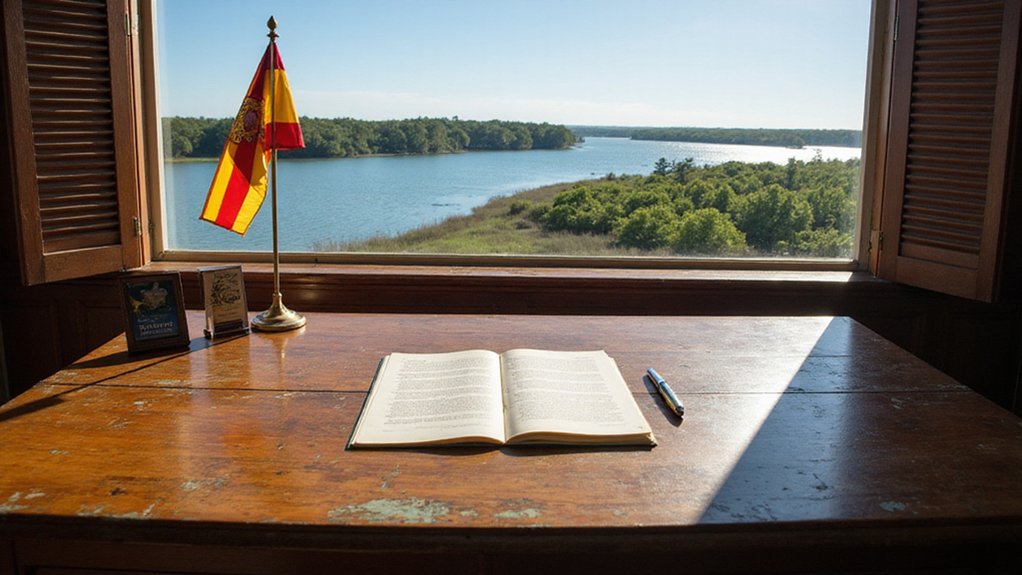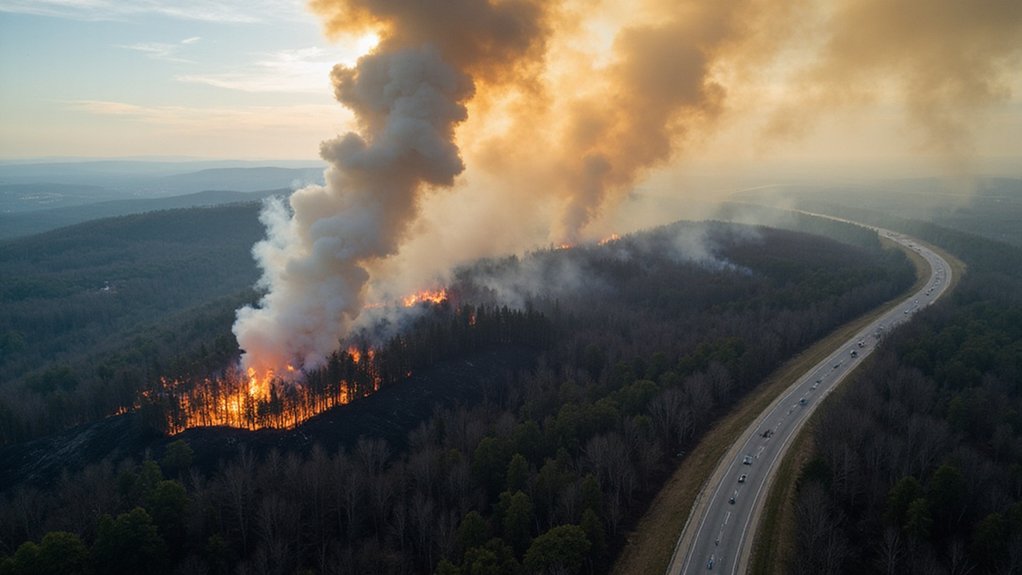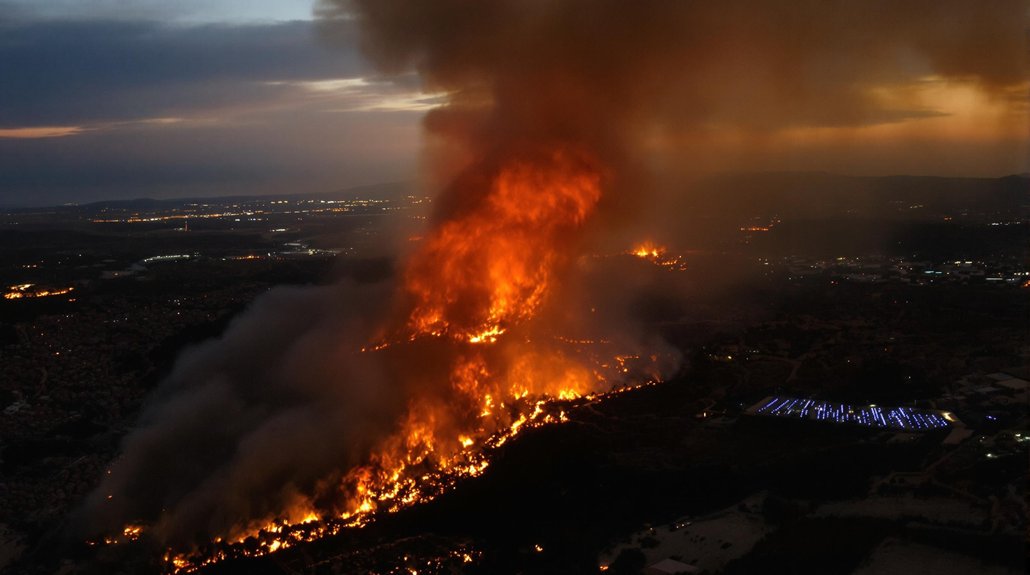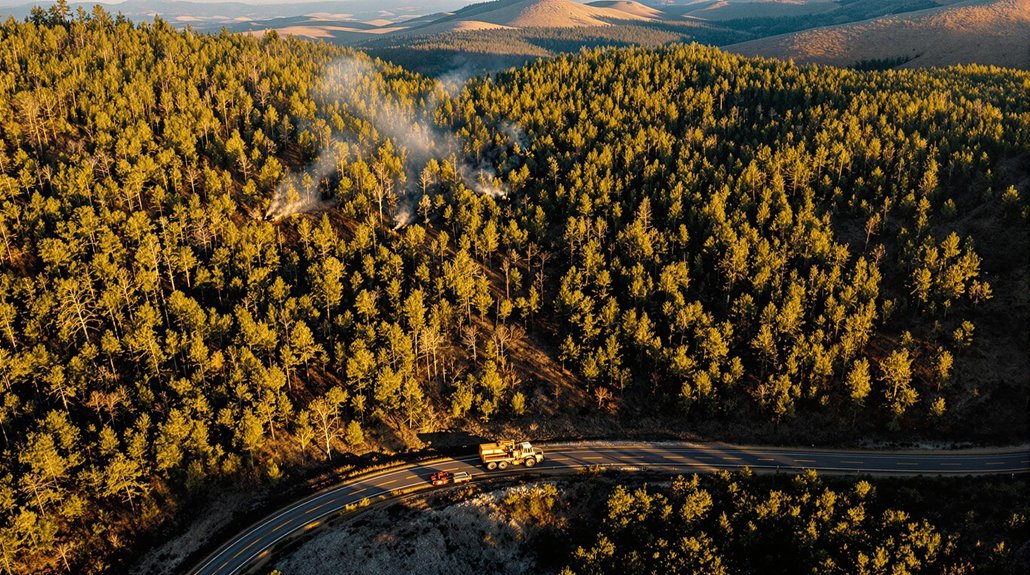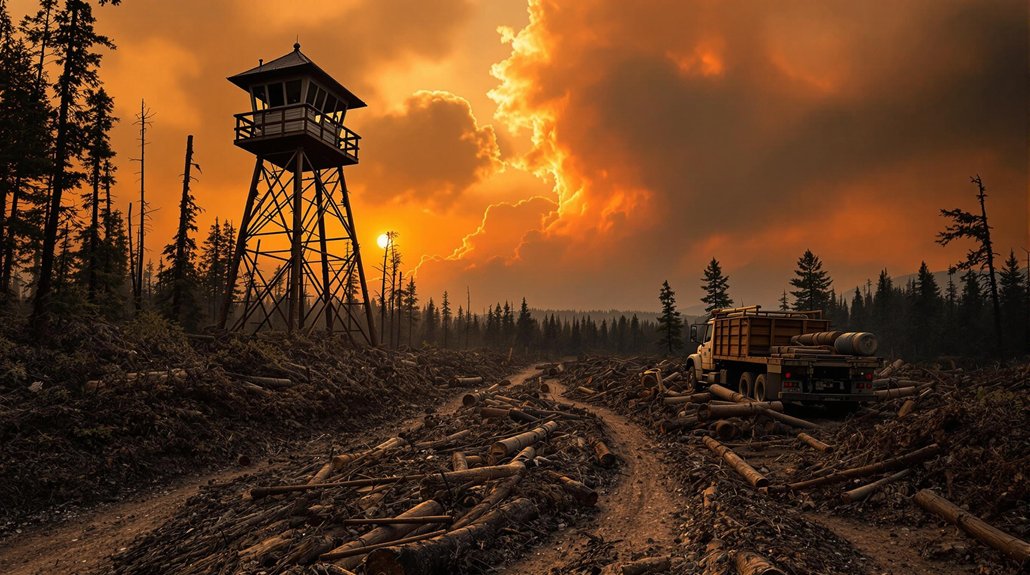Modern megafires are creating an unprecedented forest recovery crisis. Unlike historical burns, today’s larger and more severe wildfires, fueled by dry vegetation and extreme winds, leave landscapes struggling to regrow naturally. Many burned areas are converting to shrublands instead of forests due to climate change and lack of conifer seeds. The 2025 Los Angeles fires alone burned 40,000 acres, killed 27 people, and caused $28 billion in damage. The future of our forests depends on active reforestation efforts.
While wildfires have always been part of nature’s cycle, today’s megafires are creating an unprecedented forest recovery crisis across America. Since the 1980s, the annual area burned has increased dramatically, with fires growing larger and more severe. The 2025 Los Angeles wildfires burned over 40,000 acres, killed at least 27 people, and destroyed thousands of homes.
These modern megafires are different from historical burns. They’re fueled by bone-dry vegetation and hurricane-force winds, making them nearly impossible to control. The extreme heat often leaves landscapes with little ability to regrow naturally. Unlike in the past, many forests now fail to recover after these intense burns.
Scientists have found that without human help, many burned areas are converting to shrublands or grasslands instead of returning to forests. This happens because there aren’t enough conifer seeds available, and climate change makes natural recovery harder. When trees don’t come back, wildlife habitats disappear and ecosystem complexity declines. These high-severity fires are homogenizing landscapes and reducing overall species richness across affected regions.
The economic impacts are staggering. The 2025 Los Angeles wildfires caused at least $28 billion in property damage. Communities can take years to rebuild, with critical facilities like hospitals needing up to 960 days to recover after complete fire damage. The health consequences are equally concerning, as wildfire smoke contributes to respiratory health issues similar to those caused by other forms of air pollution.
Active reforestation offers hope. Tree planting has been shown to boost forest recovery rates by 25.7% in burned areas. It’s a proven technique that’s been used for over a century. However, only 6% of post-fire reforestation needs have been addressed nationwide in the past decade. The gap between reforestation needs and actual implementation is particularly concerning as 80% of reforestation needs are in wildfire-affected landscapes.
Recent public investments aim to accelerate these replanting efforts. The stakes are high—these projects aren’t just about restoring trees but rebuilding entire ecosystems. Healthy forests support biodiversity, stabilize soils, protect water quality, and provide recreation spaces for communities.
Without aggressive intervention, many of America’s beloved forests may not return in our lifetimes. The megafire recovery crisis represents a turning point that requires both immediate action and long-term commitment.
References
- https://laedc.org/wpcms/wp-content/uploads/2025/02/LAEDC-2025-LA-Wildfires-Study.pdf
- https://phys.org/news/2025-02-green-black-reforestation-recovery.html
- https://www.savetheredwoods.org/redwoods/fire/getting-to-the-facts-about-impacts-of-high-severity-wildfires/
- https://www.mdpi.com/1999-4907/15/11/1919
- https://www.savetheredwoods.org/what-we-do/our-work/restore/why-and-how-we-restore-forests/

